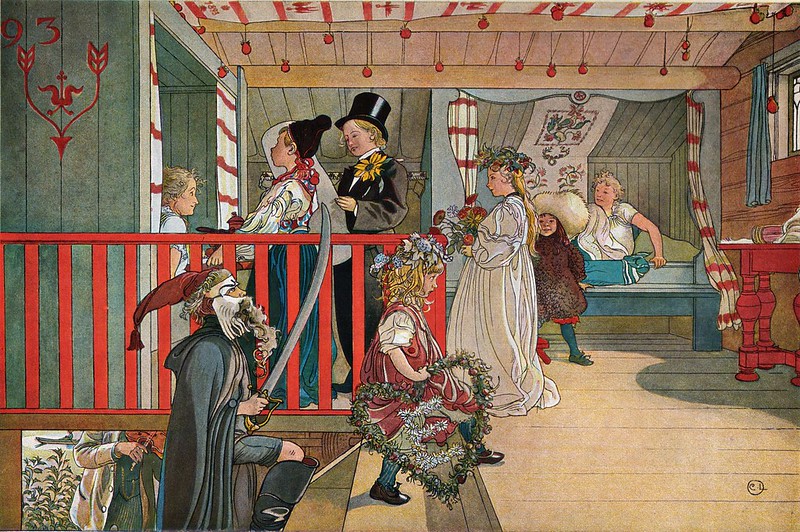Obra de Carl Larsson (1853-1919), pintor suec (1)
- Recordatori de Christian Georg Paul Pabst -
En el dia de la celebració del seu 161è aniversari de naixement
Parlem de Pintura...
Carl Larsson (Estocolm, 28 de maig de 1853 - Falun, 22 de gener de 1919) va ser un pintor suec, i membre destacat pel que fa a pintura i disseny d'interiors. Va néixer al Gamla Stan d'Estocolm, en una família extremadament pobra. La seva infància no va ser feliç, tot i així, als 13 anys el seu professor de l'escola per a nens pobres on va estudiar el va animar a presentar una sol·licitud per accedir a la "principskola" de la Reial Acadèmia Sueca de les Arts, sol·licitud que va ser acceptada. Durant el primer any es va sentir inferior als seus companys per la seva procedència social, actuant de manera tímida. Quan als 16 anys va ser admès per a continuar els seus estudis en la mateixa acadèmia, va guanyar més confiança esdevenint una figura central en la vida estudiantil de l'acadèmia. Després d'uns quants anys treballant com a il·lustrador de llibres, revistes i diaris, Larsson va anar a viure a París, on hi va passar un quants anys treballant com a artista, sense gaire èxit. El 1882, quan vivia a Grez-sur-Loing, una colònia d'artistes escandinaus dels afores de París, va conèixer l'artista Karin Bergöö, que aviat va esdevenir la seva dona. Aquest fet va marcar un punt d'inflexió en la vida de l'artista. Va ser també a Grez on Larsson va pintar algunes de les seves obres més importants, aquest cop fent servir l'aquarel·la, un estil molt diferent a la tècnica que havia emprat en les seves pintures a l'oli. Larsson va morir a Falun el gener de 1919.
Font: En català: Carl Larsson (1853-1919) - En castellano: Carl Larsson (1853-1919) - In english: Carl Larsson (1853-1919) - Altres: Carl Larsson (1853-1919)
Parlem de Música...
Christian Georg Paul Pabst (Königsberg, 27 de maig de 1854 - Moscow, 9 de juny de 1897) va ser un pianista, professor i compositor alemany. Fill d'August Pabst (1811-1885), compositor d'òperes i director del Conservatori de Riga, es va formar amb ell al piano. Anys més tard va estudiar a Viena amb Anton Door i Franz Liszt. Poc després va viatjar a Rússia, geografia on va viure la resta de la seva vida, assolint un càrrec de professor en el Conservatori de Moscou. Entre els seus alumnes cal destacar a Igumnov, Aleksandr Gol'denveyzer, Gedike, Beckman-Shcherbina, Buyukli (1873-1920), Konyus i Medtner. Com a compositor va escriure principalment obres per a piano, entre elles un Trio i un Concert de Piano. Paul Pabst va morir a Moscou el juny de 1897. El seu germà Louis Pabst (1846-1903) va ser també compositor, fundador de l'Acadèmia de Música de Melbourne i professor de l'escola de la societat filharmònica de Moscou.
Font: En català: Christian Georg Paul Pabst (1854-1897) - En castellano: No disponible - In english: Christian Georg Paul Pabst (1854-1897) - Altres: Christian Georg Paul Pabst (1854-1897)
Parlem amb veu pròpia... (vacances)
John France (Review)
Gaudiu i compartiu!
Informació addicional...
PRESTOCLASSICAL: PABST, P. - Opera and Ballet Paraphrases
CPDL: No disponible


Un administrador del blog ha eliminat aquest comentari.
ResponElimina